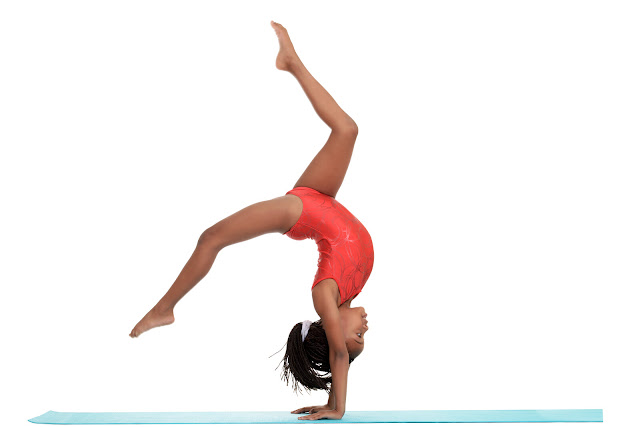Osteoporosis: A consideration for all Pilates teaching and practice, throughout life.
Prevalence of Osteoporosis and related fractures occurring in the UK
Older women are naturally at the greatest risk of osteoporosis due to their
increasing rate of bone loss caused by decreasing oestrogen production at the
onset of the menopause.
Development of Osteoporosis increases considerably from around 20% when
aged 50 years to almost 50% when aged 80 years but many of these people will be completely unaware of their reduced bone density.
One in two women and one in five men in the UK will sustain one or more
osteoporotic fractures in their lifetime, and around 300,000 fragility fractures
each year are the result of Osteoporosis.
Although far less common and somewhat preventable rather than a natural occurrence,
it is also notable that adolescent, elite sportswomen of
slight frame and body mass; for example, gymnasts and dancers may fail to
accrue enough bone density when young, when peak bone mass should naturally be
formed. Somewhat paradoxically, over-exercising before reaching adulthood and if not meeting energy intake requirements often results in a greatly increased long-term risk of Osteoporosis in these
otherwise extremely fit individuals.
It is clear that Osteoporosis is a national burden for health services
and a serious problem for the individual.
In order to maximise mitigation of fractures caused by the disease, Osteoporosis,
in particular for Women, should be a consideration at the forefront, when
exercising throughout life.
Benefits of Pilates as a form of exercise and prevention of Osteoporotic fractures
Pilates is an excellent form of exercise for all ages including the elderly and it is often favoured by physiotherapists because it allows targeted exercise of specific muscle groups in a safe and controlled manner.
Pilates is excellent to improve core strength, and to mitigate fracture risk due to falls by improving the following:
• Balance
• Posture
• Alignment
• Strength
• Mobility
• Confidence
In the past a predominantly young exercise clientele have been more fully focused on fitness without regard for bone health:
Nowadays the largest proportion of clients in Pilates studios are actually aged 50+ years old, indicating that a large proportion of clients (particularly women) attending Pilates classes are at risk of osteoporotic fracture and require special consideration for the safety of their exercise regime.
However…. practicing a ’traditional’ Pilates matwork repertoire without due consideration for the risks to those with osteoporosis is seriously problematic:
The problem with the traditional Pilates repertoire
This study appears to show that a significantly high number of fractures in upper spinal vertebrae occur in patients with osteoporosis after menopause, and who followed an exercise program based on flexion exercises. Those using extension exercises experienced a significantly reduced incidence of fracture. The study also indicates that patients who did no exercises at all were less likely to sustain a vertebral fracture than those doing flexion exercises.
So it should be noted the traditional Pilates repertoire contains many contraindicated exercises that should be avoided for those with Osteoporosis or the precursor osteopenia.
Modifications to the traditional Pilates repertoire
We can appreciate that the traditional Pilates repertoire contains numerous exercises that are contraindicated for those with osteoporosis.
The great news is that with the correct modifications to the Pilates exercise repertoire, to remove spinal flexion and torsion and concentrate on extension, then Pilates is an effective and safe form of exercise for anyone with Osteoporosis or its precursor Osteopenia.
Other Pilates exercises that should be encouraged as beneficial are to practice weight bearing, resistance and impact exercises which help promote bone growth and strength. In general, Pilates helps with balance, flexibility and coordination resulting in increased confidence and helping prevent falls resulting in serious fractures.
Complementary lifestyle considerations
When exercising and in considering everyday lifestyle and dietary choices, we should now be thinking about bone health at all ages post-puberty, to promote maximum mitigation of fractures later in life. There are 3 phases in life to consider differently according to bone health:
• Up to 35 years old when we are building bone, we should maximise bone mineral density and ‘fix’ any deficiencies while they still can be
• In adulthood we should minimise bone mineral density loss and avoid bone damage such as microfractures caused by contraindicated movement patterns.
• In our senior years we should manage the risk of falls to prevent fractures
Osteoporosis is a natural and unavoidable reduction in bone mineral density as we reach elderly age. When considering exercising for bone health from an early age and throughout life we should also consider other important factors to bone health such as diet for beneficial mineral and vitamin intake, and hormone balance etc.
Pilates instruction and bone health
Understanding Osteoporosis and bone-safe programming.
An online course by Mbodies
For information about Mbodies Training Academy visit: https://www.mbodiesacademy.com/
For Online Pilates Teacher Training and to enrol visit: https://mbodies.thinkific.com/
Author: Chris Onslow - Pilates Consultant
Chris Onslow, has run Pilates focussed businesses since 1998. He and his team specialise in supporting Pilates entrepreneurs and business owners. With a rich history of owning and running successful Pilates studios in the UK, and supporting others in Europe and the Middle East, Chris has broad expertise in maximising profitability and optimising operational efficiency. His agency provides top-tier advice on selecting new, pre-owned, and hireable Pilates equipment from renowned brands such as Align-Pilates, Balanced Body or Stott-Pilates/Merrithew. As the founder of Mbodies Training Academy, Chris continues to revolutionise Pilates education, offering premier online and hybrid CPD and qualification courses for Pilates apparatus instruction and special population CPD. Discover more about how Chris can support your Pilates Business or home exercise choices at www.pilates-consultant.co.uk


.jpg)







Comments
Post a Comment